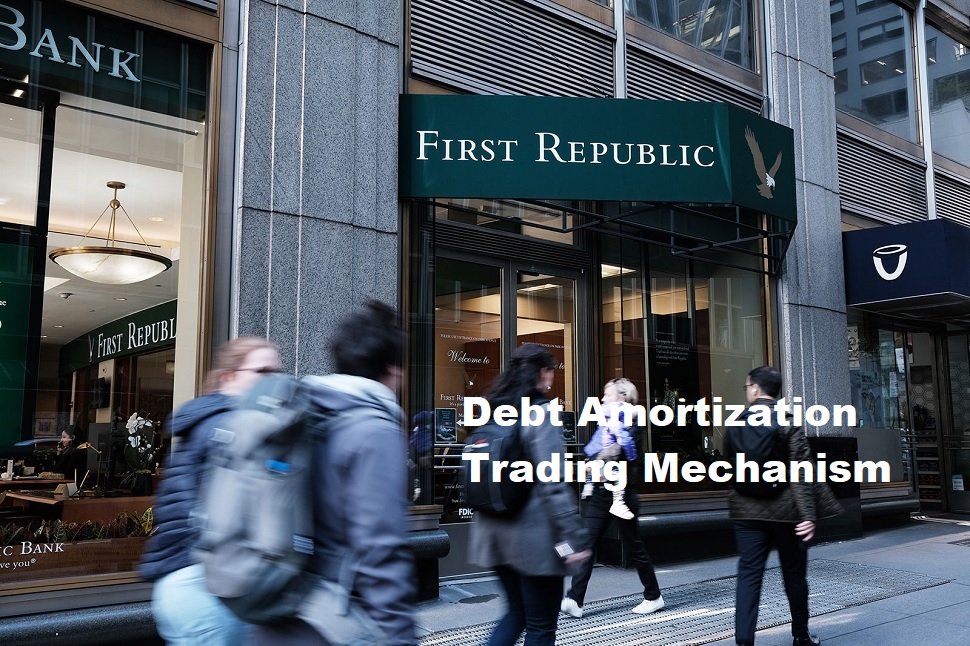Debt Amortization Trading is a concept in the world of finance that is related to the systematic reduction in the value of debt or loans over time. The main idea behind debt amortization trading is to arrange payments that include part of the principal and part of the interest, which will help in reducing the amount of debt slowly until it reaches a point where the debt can be settled in full. In this process, loan recipients must follow an agreed repayment schedule to amortize debt and balance risks and control cash flow. The definition of debt amortization trading involves two important components: amortization and trading. Amortization refers to the process of slowly but surely reducing debt, while trading is the practice of buying and selling financial assets, some of which include debt management. Therefore, debt amortization trading includes the practice of buying and selling financial instruments such as bonds or debentures with the aim of reducing the amount of loans that must be paid, either by a company or an individual.
In the context of the difference between debt amortization trading and other types of trading, we need to know that the choice of strategy is based on investment objectives and risk preferences. Other types of trading such as day trading, swing trading, or position trading place more emphasis on taking advantage of short- to medium-term market price fluctuations, by selling or buying financial assets such as shares, currencies, or commodities. In debt amortization trading, the main focus is reducing the amount of debt through buying and selling debt instruments such as bonds or securities. In essence, debt amortization trading is an approach to debt management that involves buying and selling financial instruments, especially those related to loans. This practice differs from other types of trading because it focuses more on reducing the amount of debt rather than taking advantage of changes in market prices. Apart from that, debt amortization trading also helps in controlling risk and maintaining cash flow stability for lenders and loan recipients. As an effective strategy for managing debt, debt amortization trading is worth considering for investors who want to reduce their debt burden and achieve long-term financial goals.
Debt Amortization Trading Mechanism
The process in Debt Amortization Trading begins with identifying investment opportunities and risk analysis. This stage includes market research, fundamental analysis, and technical analysis. Investors then choose the right instrument based on potential returns and risk profile, and calculate the investment amount to be allocated. After the investment has been decided, investors will carry out transactions to purchase debt instruments through trading platforms or financial institutions such as banks and securities companies. During the investment period, investors need to monitor the performance of their portfolio as well as overall economic and market conditions. This is important to assess whether the Debt Amortization Trading strategy still suits your investment objectives and risk profile.
Factors that need to be considered when setting a trading strategy include interest rates, global and regional economic conditions, as well as developments in certain industrial sectors. The influence of these factors can affect the value of debt instruments and the expected returns. Therefore, it is important for investors to always update their knowledge of financial markets, as well as carry out regular analysis in order to achieve maximum results from the Debt Amortization Trading strategy. When the maturity date of the debt instrument arrives, investors will receive principal and interest payments according to a predetermined amortization scheme. At this stage, investors must reassess their investment objectives and make a decision whether to sell debt instruments in the secondary market, continue investing in new debt instruments, or diversify the portfolio with other investments. News on market movements and economic developments must be an important source of information in making these decisions.
Benefits and Risks of Debt Amortization Trading
One of the main advantages of Debt Amortization Trading is earning a steady stream of income in the form of interest payments. Additionally, this practice can provide better portfolio diversification as it reduces the risks associated with equity investments. Investors can utilize Debt Amortization Trading to reduce the impact of market volatility felt on other investments. In many cases, debt instruments such as bonds offer more stable performance than shares, especially in periods of market uncertainty. Additionally, because principal repayment is clearly scheduled, investors have clarity about their future returns, making it an attractive investment option for those who prioritize return reliability.
Even though it has several advantages, Debt Amortization Trading also has risks that investors need to pay attention to. One of the main risks is the risk of default by the debt issuer, which could cause losses for investors. This risk can be systematic, for example if there is a major economic or political crisis that impacts many debt issuers at once. In addition, interest rates can also change the relative value of debt instruments, thereby affecting investors’ profit potential. Choosing the right debt instrument in Debt Amortization Trading can be a challenge for investors. An accurate and in-depth credit assessment is very important to assess the risk of default and determine whether the interest rate offered is appropriate to the risk taken. Additionally, investors need to consider the liquidity of the debt instrument, as a lack of liquidity may make it difficult for them to sell the instrument if necessary, or cause the price to fall rapidly if there is significant selling pressure.
Practical Examples and Tips for Success in Debt Amortization Trading
As a practical example, an investor purchases a 10-year government bond with a face value of $1,000 and a coupon interest rate of 5% per year. Then, the investor sells the bonds after 5 years with the same nominal value and a market interest rate of 6%. In this scenario, investors will benefit from the difference in coupon interest rates and market interest rates. To achieve success in Debt Amortization Trading, the first step that needs to be taken is to understand the risk and return profile of debt instruments on the market. Factors such as duration, liquidity, and economic outlook must be considered before determining the types of bonds to purchase in an investment portfolio.
Furthermore, investors must also carry out research and analysis of market conditions and interest rate dynamics. This is important to assess whether the selected bond has the potential to gain capital gains or experience a price decline. One of the tips for success in this strategy is to always maintain flexibility in buying and selling bonds according to liquidity and risk hedging needs. Last but not least, investors must develop a systematic portfolio management strategy, including asset selection and allocation, diversification of debt instruments, as well as review and rebalancing periods. By following the steps and tips for success above, the opportunity to make profits from Debt Amortization Trading will be greater and minimize possible risks.









